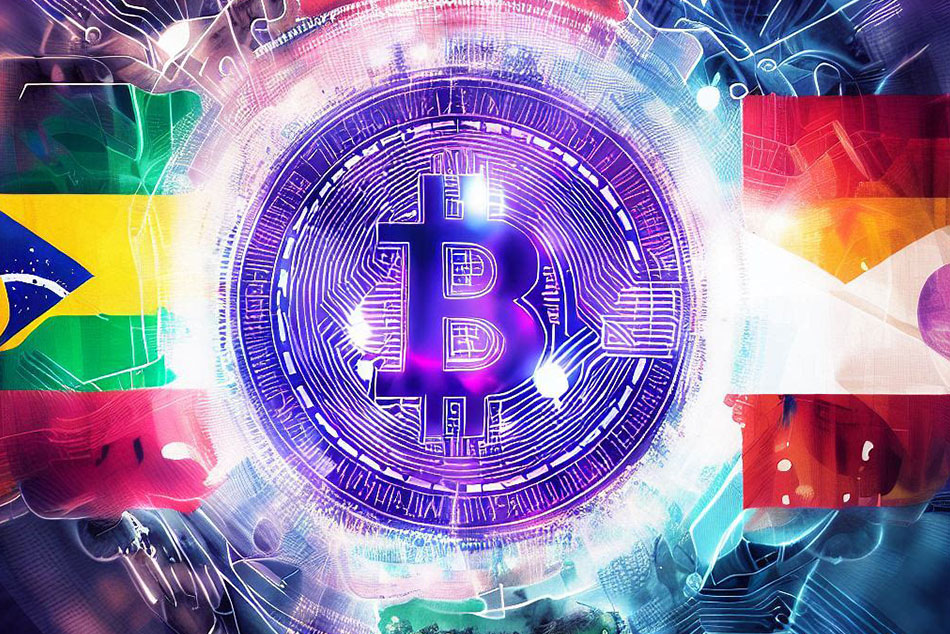The U.S. dollar has been the dominant global reserve currency for decades, accounting for more than 60% of the world’s foreign exchange reserves. However, in recent years, some emerging economies have been challenging the dollar’s supremacy by exploring the possibility of creating a new digital currency that could rival or even replace it. These economies are the BRICS nations: Brazil, Russia, India, China, and South Africa.
What is the BRICS currency and why does it matter?
The BRICS currency is a proposed digital currency that would be backed by gold and supported by blockchain technology. The idea is to create a common payment system for trade and investment among the BRICS countries, as well as other friendly nations that may join the bloc in the future. The BRICS currency would aim to reduce the dependence on the U.S. dollar and its associated risks, such as sanctions, inflation, and devaluation.
How the BRICS Currency Could Affect the Forex Market
The BRICS currency could affect the forex market in several ways, depending on its design, adoption, performance, and regulation. Some possible scenarios are:
- The BRICS currency could complement the U.S. dollar as a regional or secondary reserve currency, especially for countries that have strong trade and investment ties with the BRICS bloc. This could increase the diversity and stability of the global monetary system, but also reduce the demand and influence of the U.S. dollar in some markets.
- The BRICS currency could compete with or even displace the U.S. dollar as a global reserve currency, especially if it proves to be more reliable, transparent, and efficient than the U.S. dollar. This could undermine the U.S.’s economic and geopolitical advantages, such as its ability to borrow cheaply, impose sanctions, and influence global policies.
- The BRICS currency could coexist with or even support the U.S. dollar as a global reserve currency, especially if it is pegged to or convertible with the U.S. dollar. This could enhance the liquidity and accessibility of both currencies, but also create interdependence and vulnerability between them.
The impact of the BRICS currency on the forex market would also depend on how well it can overcome the technical, economic, political, and legal challenges that it may face in its creation and implementation.
The BRICS currency is still a hypothetical concept that has not been officially announced or agreed upon by the BRICS countries. It is not clear when or if it will materialize or succeed. However, it is an interesting topic to explore and learn more about, as it signifies a growing challenge to the established economic order and the dominance of the U.S. dollar.
How would the BRICS currency affect the U.S. dollar?
The impact of the BRICS currency on the U.S. dollar would depend on several factors, such as its design, adoption, performance, and regulation. However, some possible scenarios are:
• The BRICS currency could complement the U.S. dollar as a regional or secondary reserve currency, especially for countries that have strong trade and investment ties with the BRICS bloc. This could increase the diversity and stability of the global monetary system, but also reduce the demand and influence of the U.S. dollar in some markets.
• The BRICS currency could compete with or even displace the U.S. dollar as a global reserve currency, especially if it proves to be more reliable, transparent, and efficient than the U.S. dollar. This could undermine the U.S.’s economic and geopolitical advantages, such as its ability to borrow cheaply, impose sanctions, and influence global policies.
• The BRICS currency could coexist with or even support the U.S. dollar as a global reserve currency, especially if it is pegged to or convertible with the U.S. dollar. This could enhance the liquidity and accessibility of both currencies, but also create interdependence and vulnerability between them.
What are the challenges and opportunities for the BRICS currency?
The creation and implementation of the BRICS currency would face many challenges and opportunities, such as:
Challenges:
• Technical: The design and development of a secure, scalable, and interoperable digital currency system would require advanced technology and expertise.
• Economic: The coordination and harmonization of monetary policies and exchange rates among the BRICS countries would require mutual trust and cooperation.
• Political: The acceptance and adoption of a new digital currency by other countries and institutions would require diplomatic efforts and incentives.
• Legal: The regulation and oversight of a new digital currency by national and international authorities would require clear rules and standards.
Opportunities:
• Innovation: The use of blockchain technology and gold backing would offer new possibilities for enhancing transparency, security, and efficiency in cross-border transactions.
• Integration: The establishment of a common payment system would facilitate trade and investment among the BRICS countries and their partners.
• Diversification: The introduction of a new reserve currency would increase the diversity and stability of the global monetary system.
• Empowerment: The emergence of a new economic bloc would increase its influence and voice in global affairs.
Conclusion
The BRICS currency is a potential game-changer for the U.S. dollar that could reshape the global economic landscape and balance of power. However, it is not a foregone conclusion that it will materialize or succeed. It will depend on how well it can overcome the technical, economic, political, and legal challenges, and how well it can leverage the innovation, integration, diversification, and empowerment opportunities. The U.S. dollar may still remain the dominant global reserve currency for the foreseeable future, but it may also face increasing competition and pressure from the BRICS currency and other alternatives. Therefore, it is important for both the U.S. and the BRICS countries to monitor and engage with each other on this issue, and to seek constructive and cooperative solutions that can benefit all parties involved.






